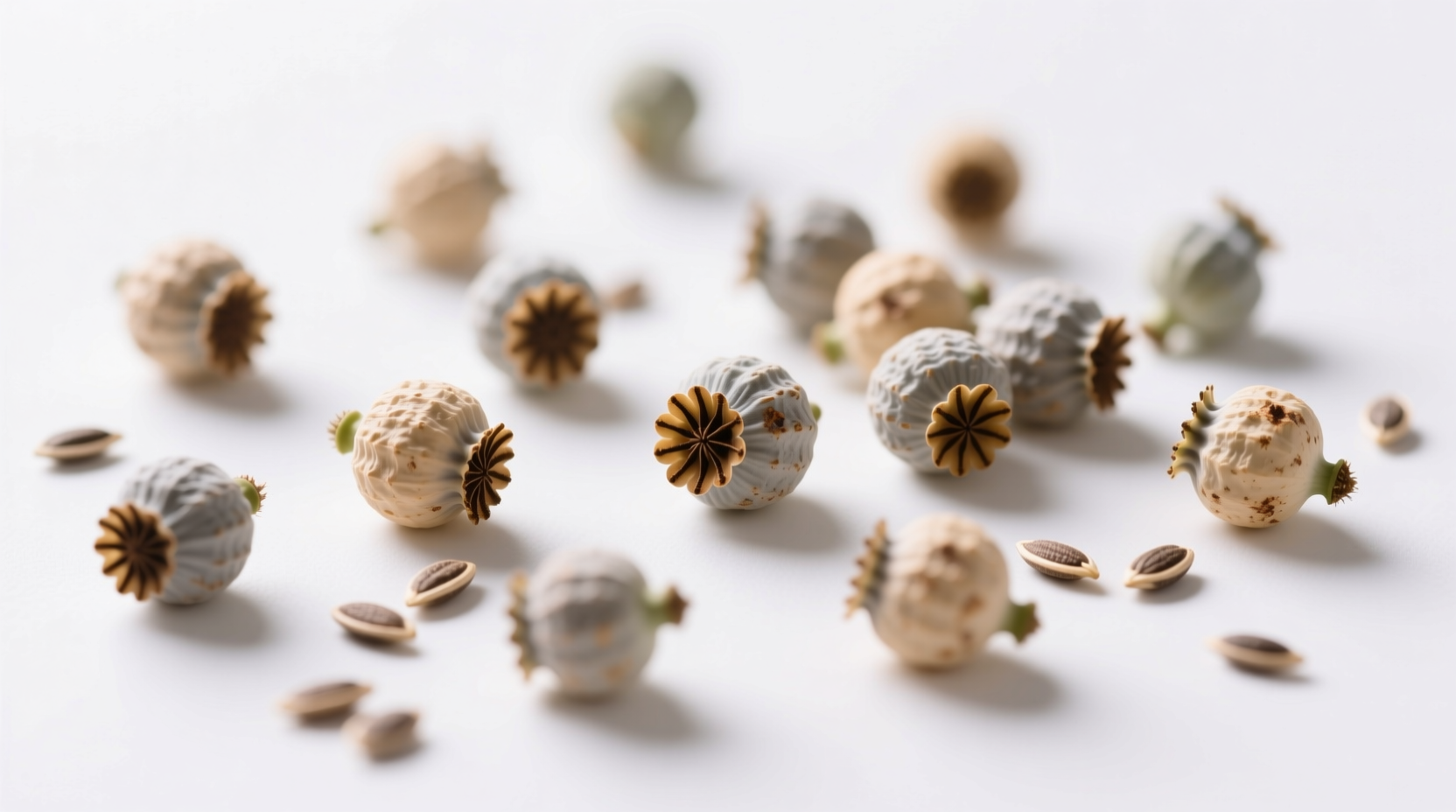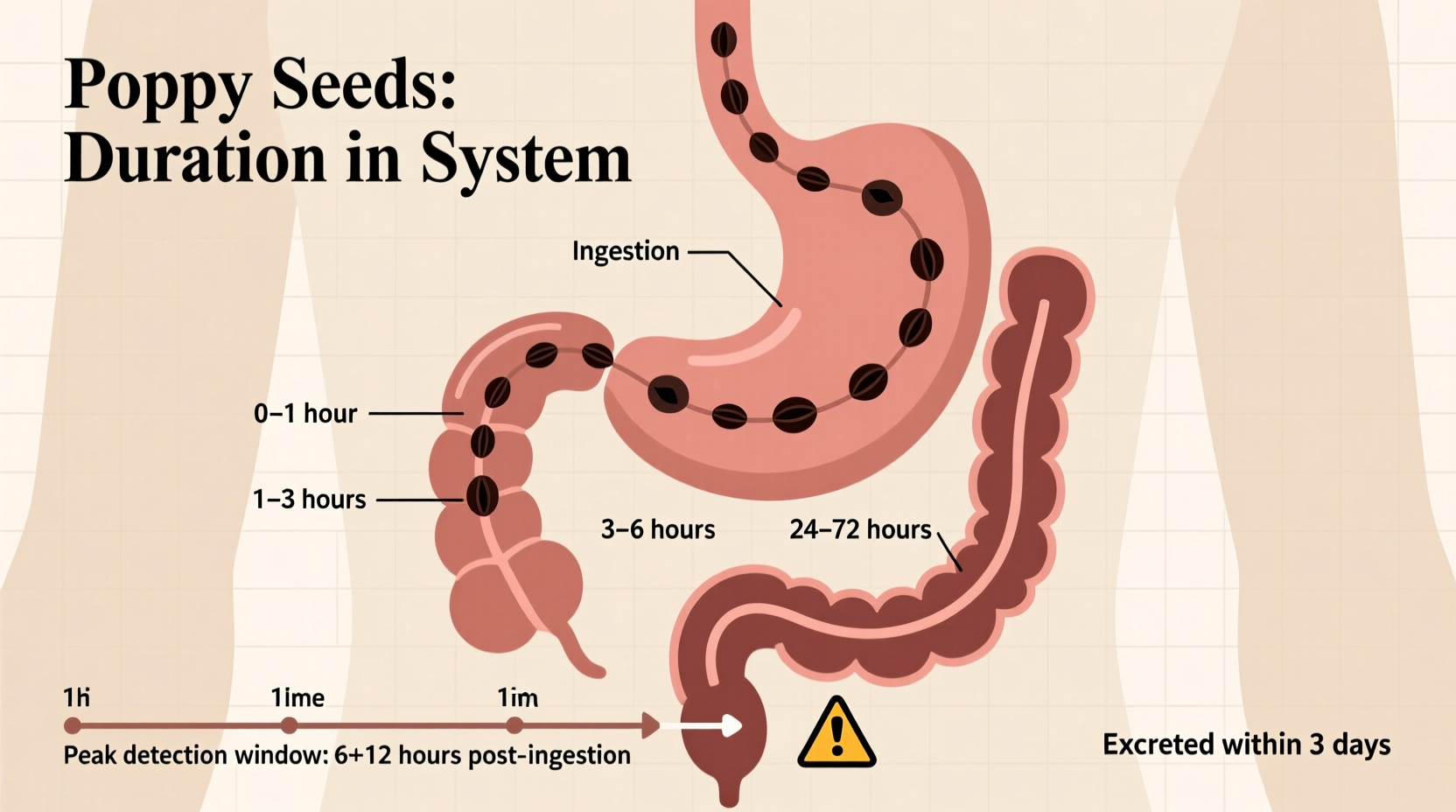Poppy seeds typically remain detectable in urine for 12-48 hours after consumption, though in rare cases detection may extend up to 3 days. The exact timeframe depends on multiple factors including the amount consumed, individual metabolism, and the sensitivity of the drug test. Eating just one poppy seed-containing product can trigger a false positive for opiates on standard drug screenings.
Understanding how long poppy seeds stay in your system is critical for anyone facing employment drug testing or medical screenings. This comprehensive guide provides medically accurate information based on current research and official guidelines from health authorities.
The Science Behind Poppy Seeds and Drug Testing
Poppy seeds come from the Papaver somniferum plant, the same source as opium. While the seeds themselves don't contain opium, they can become contaminated with morphine and codeine during harvesting when the seed pods are cut. The Drug Enforcement Administration (DEA) confirms that even thorough washing cannot completely remove these trace opiates.
When you consume poppy seeds, your body metabolizes these compounds into morphine and codeine metabolites that standard drug tests detect. The National Institute on Drug Abuse states that “eating foods prepared with poppy seeds can produce a positive drug test result for opiates.”

Detection Timeframes by Test Type
Your body processes poppy seed compounds differently depending on the biological sample being tested. Here's what current research shows:
| Test Type | Typical Detection Window | Maximum Detection (Rare Cases) |
|---|---|---|
| Urine Test | 12-48 hours | 72 hours |
| Blood Test | 6-12 hours | 24 hours |
| Saliva Test | 1-2 days | 3 days |
| Hair Follicle Test | N/A | Up to 90 days |
This data aligns with findings published in the Journal of Analytical Toxicology, which documented cases where participants tested positive for morphine up to 60 hours after consuming poppy seed products.
Factors That Influence Detection Duration
Several variables affect how long poppy seed metabolites remain detectable in your system:
- Consumption amount: A single poppy seed bagel may produce detectable levels for 24 hours, while multiple servings could extend detection to 3 days
- Individual metabolism: People with faster metabolisms clear compounds more quickly
- Test sensitivity: Federal workplace tests use a 2,000 ng/mL cutoff (SAMHSA-5 guidelines), while some private employers use lower thresholds of 300 ng/mL
- Hydration levels: Higher fluid intake may slightly reduce concentration in urine samples
- Body mass: Larger individuals may process compounds differently than smaller individuals
Real-World Evidence and Case Studies
The Substance Abuse and Mental Health Services Administration (SAMHSA) increased the morphine cutoff level from 300 ng/mL to 2,000 ng/mL specifically to reduce false positives from poppy seed consumption. This change, documented in their 2019 proposed rule changes, acknowledges the real impact of dietary poppy seeds on drug testing.
A well-documented case published by the Centers for Disease Control and Prevention involved a patient who tested positive for opiates after eating two poppy seed muffins. Laboratory analysis confirmed morphine levels peaked at 3,800 ng/mL four hours after consumption and remained above 2,000 ng/mL for 22 hours.
Practical Guidance for Poppy Seed Consumers
If you have an upcoming drug test, follow these evidence-based recommendations:
- Avoid poppy seed products for 48-72 hours before testing - This provides the safest window to ensure clearance
- Document your consumption - If you must eat poppy seeds before testing, keep receipts and note quantities consumed
- Request a confirmatory test - If you receive a positive result, ask for GC/MS testing which can distinguish between prescription opiates and poppy seed metabolites
- Consult your healthcare provider - They can provide documentation explaining potential dietary causes for positive results
Common Misconceptions Clarified
Several myths persist about poppy seeds and drug testing that need clarification:
- Myth: “Only large amounts of poppy seeds cause positive tests”
- Fact: Studies show even one poppy seed bagel can produce morphine levels exceeding 3,000 ng/mL
- Myth: “Washing poppy seeds removes all opiates”
- Fact: The DEA confirms that standard washing procedures cannot completely eliminate morphine contamination
- Myth: “Poppy seeds contain enough opiates to cause intoxication”
- Fact: The trace amounts present are insufficient to produce any psychoactive effects
When to Seek Medical Advice
While poppy seed consumption typically causes only temporary test interference, consult a healthcare professional if:
- You experience unexpected positive results after avoiding poppy seeds
- You need documentation for employment purposes
- You have concerns about medication interactions
- You're undergoing treatment where accurate drug testing is critical
Medical professionals can provide context-specific guidance and documentation that may help resolve testing complications.
Conclusion
Poppy seeds generally remain detectable in urine for 12-48 hours after consumption, with rare cases extending to 72 hours. Understanding these timelines and the factors that influence detection can help prevent unnecessary complications with drug screenings. By following the practical guidance outlined in this article and allowing sufficient clearance time before testing, most individuals can avoid false positive results from dietary poppy seed consumption.











 浙公网安备
33010002000092号
浙公网安备
33010002000092号 浙B2-20120091-4
浙B2-20120091-4